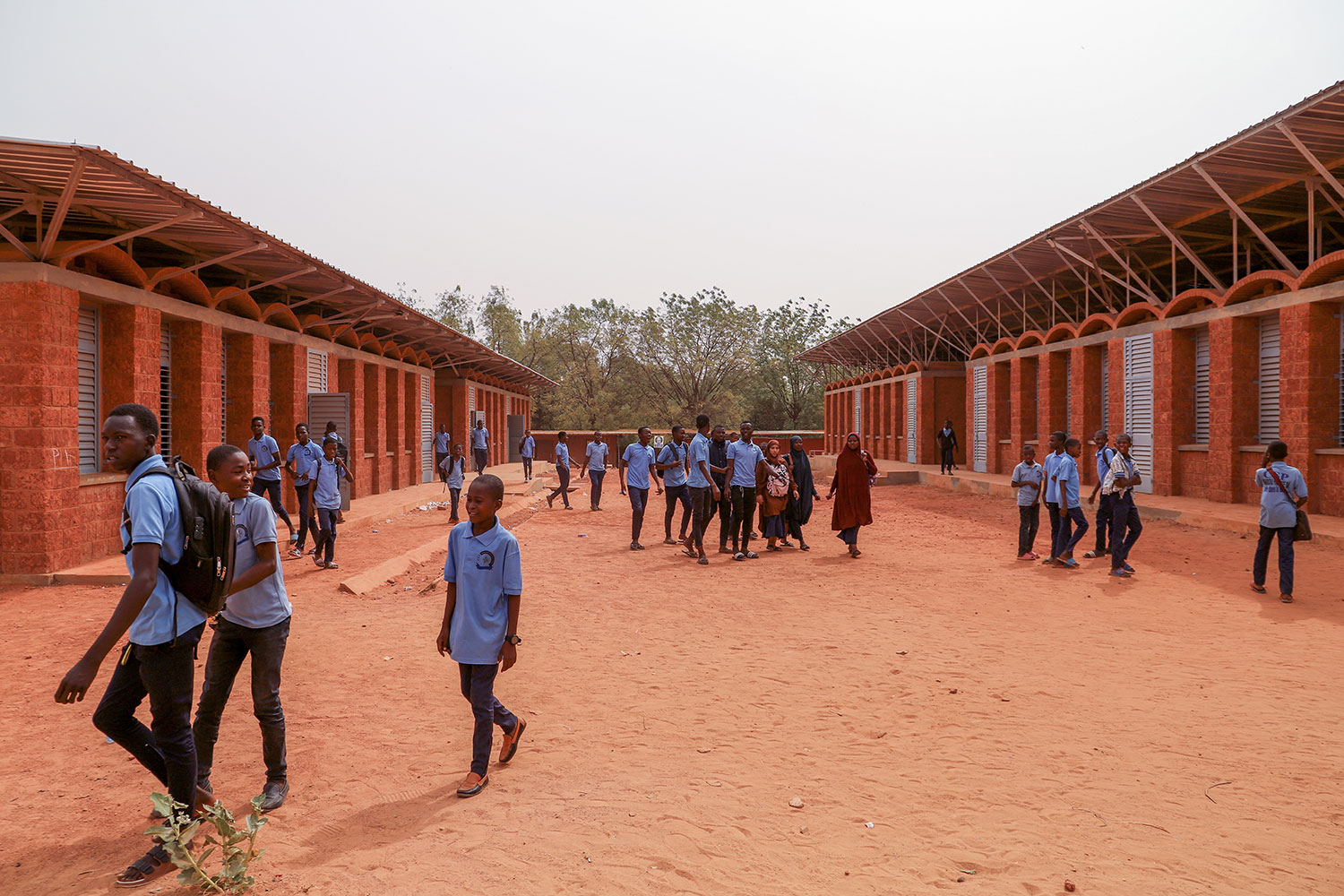Article 25 with Michael Hadi Associates and Max Fordham have designed new, passively cooled classrooms for a college in west Niger.
Photos
Souleymane Ag Anara and Toby Pear
In Niamey, west Niger, architecture charity Article 25 has been working with local educational institution, the Collège Amadou Hampaté Bâ, to design and deliver new classrooms and facilities for up to 1,200 children at primary and secondary school age.
The scheme addresses a challenge which faces the educational sector across Niger: with an average of seven children born to every woman, the country has the highest birth rate in the world, however, its education system struggles to retain students beyond primary school.
Working with Michael Hadi Associates and Max Fordham LLP, who supplied structural and M&E services respectively, the project from Article 25 refurbishes existing classrooms within the college and adds five teaching blocks, bringing the new total of classrooms for Amadou Hampaté Bâ to 20. New administrative facilities, an assembly hall, library and latrine blocks have also been added, with improvements to water and electrical services also in the works – being carried out so the school does not have to rely on the local authority’s intermittent supply.
The new additions make use of local materials, such as laterite stone, and have been constructed using local building methods, which in turn address the challenging climatic conditions to create comfortable learning spaces.
Laterite stone is in fact the scheme’s principal material, employed due it being an inexpensive and locally available resource with a low embodied carbon footprint, representing an underutilised asset in Niger. The material, extracted from a quarry just 10km outside Niamey, provides thermal mass to regulate heat release during the day and offers better breathability compared to the prevalent cement blocks in modern Niamey construction.


Laterite is manually excavated from a nearby quarry and naturally hardens upon exposure to air, making it suitable for building purposes.
As part of a construction training programme from Article 25 that took place in tandem with the project, local masons have learnt new skills to enhance their proficiency in working with laterite, aiming to extend these skills to future projects in the region. The charity has also launched an on-site training program specifically catering to young girls interested in the construction industry.
Employing passive design principles, the structures effectively counteract the intense temperatures in Niamey, fostering comfortable environments for teaching and learning. Niamey’s climate poses significant challenges, characterized by year-round daytime temperatures of 30 degrees, and often exceeding 40 degrees in warmer months. Due to the high cost and unreliability of air conditioning, a passive design approach has been adopted to minimize its usage.

The classrooms incorporate a dual-roof system inspired by Francis Kere, featuring earth brick vaults as the primary roof and a lightweight flying metal roof above. The roof’s inclination and building orientation facilitate the movement of air through the roof cavity, preventing the sun’s heat from radiating into the interior spaces.
To date, this passive design strategy has proven highly successful. Through temperature monitoring over several months, it has been observed that even with up to 40 students present, the classrooms maintain significantly lower temperatures than the outdoor surroundings, typically registering a decrease of 7-8 degrees Celsius by mid-afternoon.
Watch a video on the project below:
Source: Architecture Today



